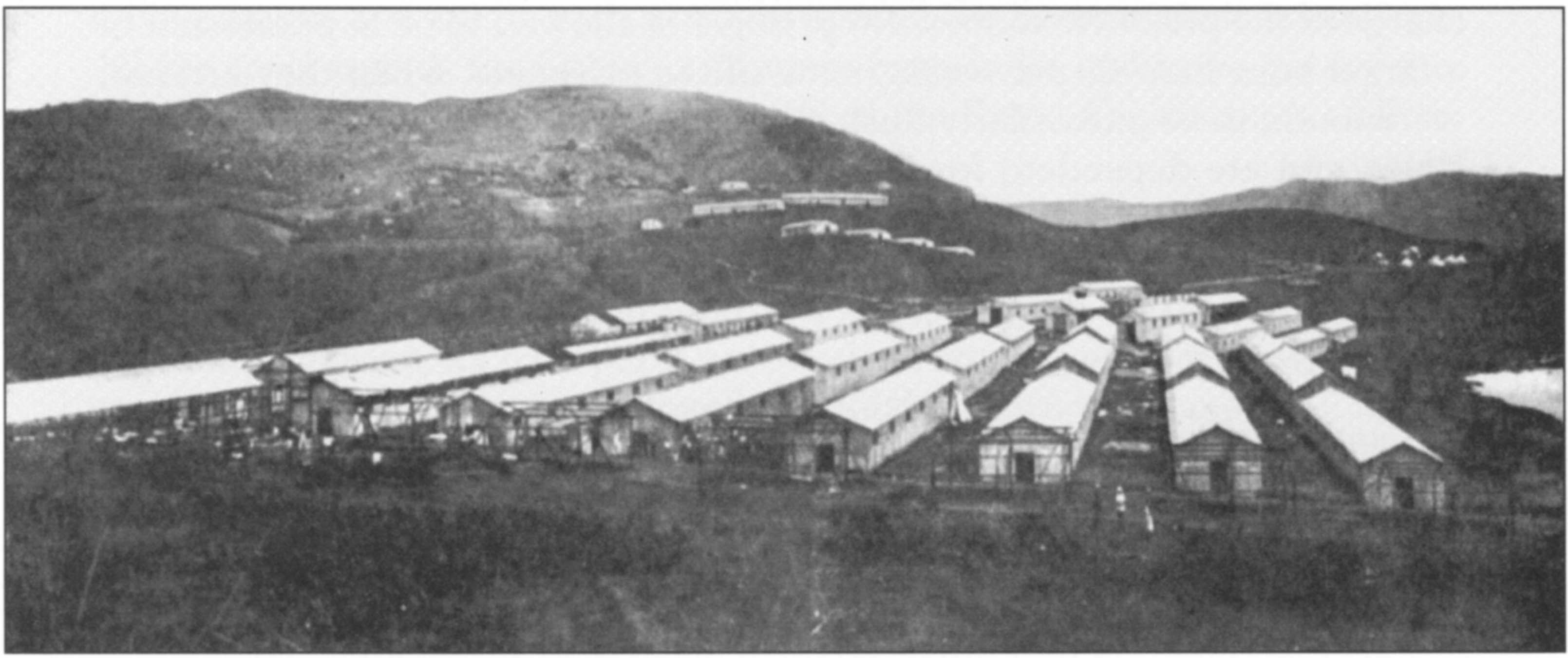

The first batch of prisoners from South Africa arrived at Diyatalawa, Ceylon, on 9 August 1900. This camp, situated some 225 km east of Colombo, the capital, was the largest of the six in Ceylon. and was at one time the Reformatory erected by the Wesleyan Mission. The 'Happy Valley Industrial Home', as it was known, had been used as a convalescent centre for the Colombo garrison. The building could hold only a few prisoners, so over the previous three months some fifty wooden huts with corrugated iron roofs had been erected. They measured 150 x 25 feet and each was designed to hold 48 prisoners.
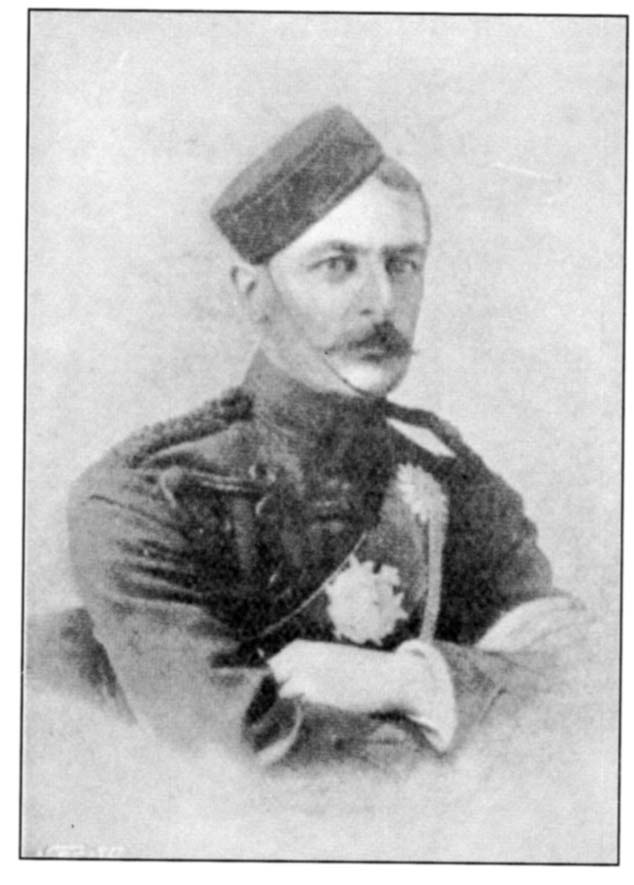 |
| Lieut.-Col. A. C. F. Vincent |
The Times of London on 26 July 1900 gave a report from their correspondent in Colombo:
By orders from the War Office, the Governor of Ceylon has been very busy for three months back preparing a camp and accommodation in Diyatalawa Valley for 2,000 Boer prisoners and their guards. The situation is one of the healthiest in the island - about 4,000 ft above sea level, with rolling downs and veldts such as might remind the Boers of their homeland. All the sheet iron in the Colony and more from India had to be got for the construction of the huts; and a company of the Royal Engineers as well as private contractors have been busy.
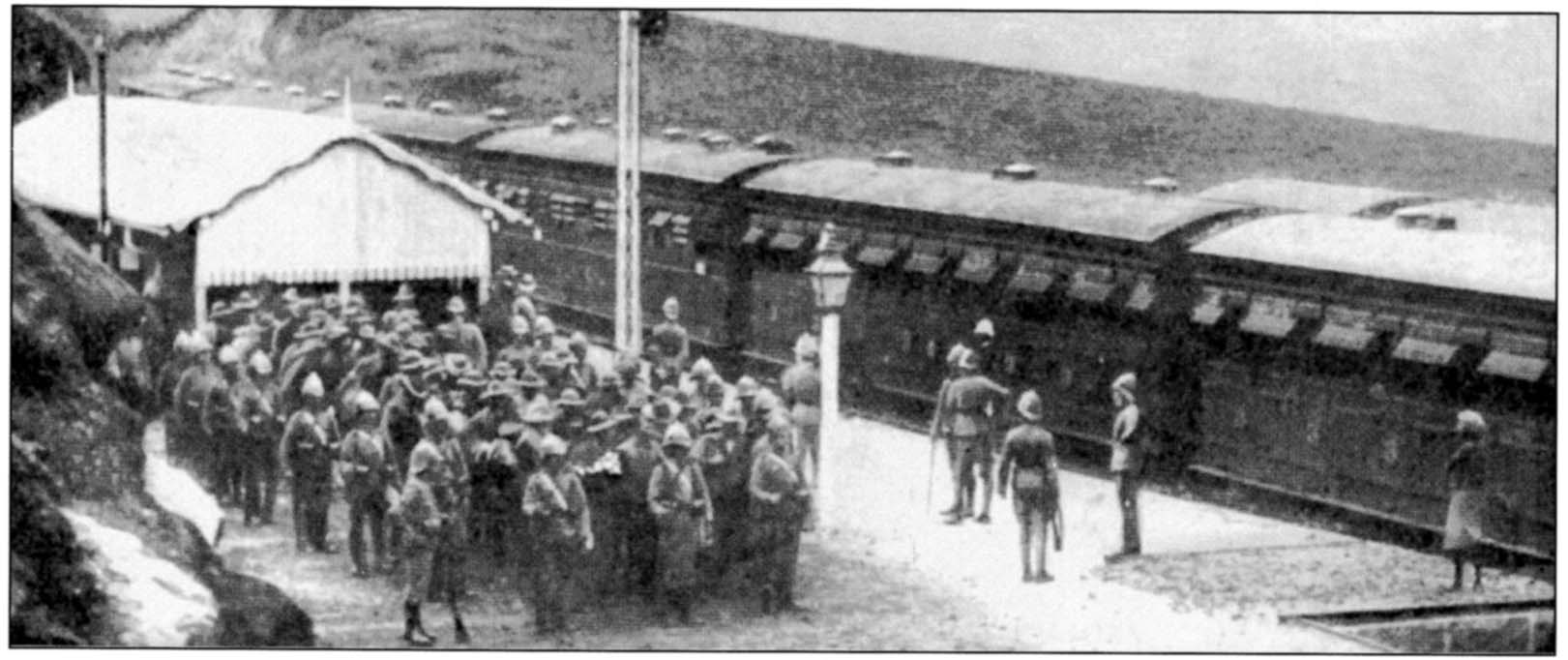
Up to the present, six transports have arrived from South Africa with prisoners of war for Ceylon, and altogether a total of 3,886 prisoners of all ranks have been sent to the camp at Diyatalawa. Another batch of 260 prisoners is due here on 24 September by the steamship "City of Vienna" and it is expected that by the end of the present month or the beginning of next 5000 prisoners - the limit to be accommodated in Ceylon - will have been located in our midst. Among the next batch to arrive is the well known Boer Leader, Commandant Olivier, and his three sons, the capture of whom was mentioned by Lord Roberts as a very important one. Commandant Roux, the "fighting parson" who surrendered with General Principle at Fouriesburg, is already in camp. About 2000 of the prisoners who have arrived up to date formed a portion of Prinsloo's commando and are nearly all genuine Boers.
A report in A. W. Andree's book Illustrations of Life in the Boer Camp published in 1901 gives an account of the money issued in camp:
Col. Jesse Coope, who fought both in the Crimea and in the first Boer War (1880-81), accompanied one of the first batches of Boer captives to Ceylon, and is now officer in charge of prisoners of war at Diyatalawa. He has his own office in Camp, acts as a kind of Paymaster-General to the prisoners, listens to their grievances, and attends to their wants. Colonel Coope takes charge of the prisoners money. No prisoner is allowed to be in possession of a larger sum than £1 per week. Some of the prisoners, when they arrived, were found to be particularly flush with money, others were practically destitute, and are dependent for the necessary renewals to their wardrobe on the success of their appeals to the Colonel. His duties are also responsible, and his cheery disposition and marked courtesy of manner have made him a general favourite. Camp currency is now in circulation consisting of 50 cents, 1, 5 and 10 rupees.
Each 'Good For' notes as they were known was individually numbered on both sides at the top. and bear the rubber stamp signature of Lieut.-Col. Vincent. Before issue they were dated with a rubber stamp and copies have been recorded from 4 March 1901 until 8 May 1902. The notes, which were printed locally, measure 4½ x 3¼ inches (114 x 83 mm) and are printed in the following colours.
| Value | Colours |
| 50 Cents | Black and purple on green |
| 1 Rupee | Black and red on yellow |
| 5 Rupees | Black and turquoise on beige |
| 10 Rupees | Black and dark blue on pink |
From details of notes recorded, it would appear that each value had their numbering starting at 1. To date the following highest and lowest numbers are known:
| 50 Cents | 108 to 3868 |
| 1 Rupee | 14 to 7995 |
| 5 Rupees | 196 to 2533 |
| 10 Rupees | 69 to 1171 |
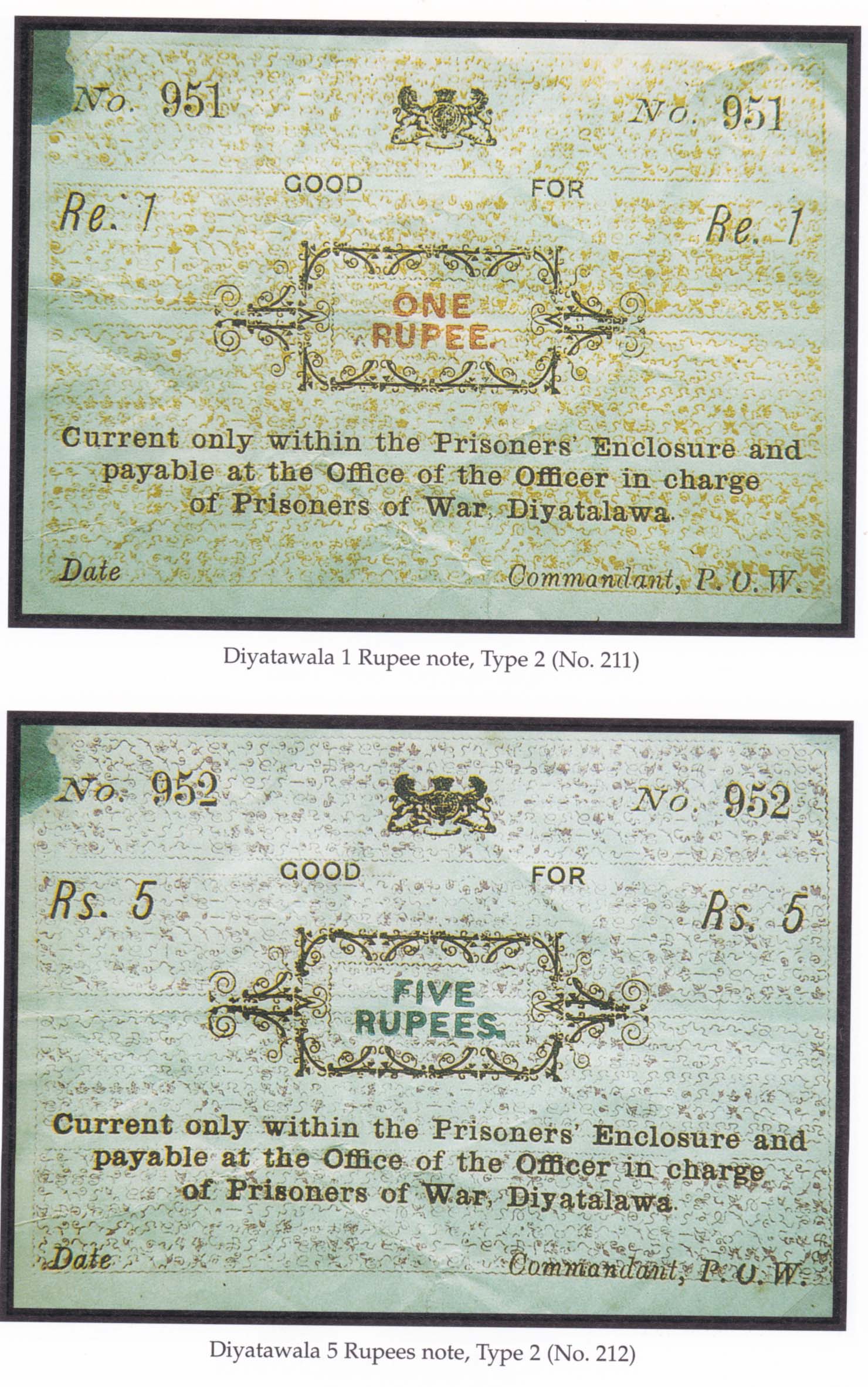 Only recently has the author been made aware that a second type of
Diyatalawa notes were printed. A full set of four are in the banknote
museum of the Bayerische Hypo and Vereinsbank in Munich, Germany.
What is unusual with these notes is that the design around the value
written in words is similar to the notes in use at the POW camp at
Trichinopoly in India. It would therefore seem possible that the notes
for both countries were printed in Ceylon.
Only recently has the author been made aware that a second type of
Diyatalawa notes were printed. A full set of four are in the banknote
museum of the Bayerische Hypo and Vereinsbank in Munich, Germany.
What is unusual with these notes is that the design around the value
written in words is similar to the notes in use at the POW camp at
Trichinopoly in India. It would therefore seem possible that the notes
for both countries were printed in Ceylon.
The set of these notes in Munich are all in a creased condition, which
could indicate that they were a proof printing that had been
discarded. To date no other examples have been recorded of this second
type of note. Also unusual is that the numbering of the notes is in
sequence : 50 cents No. 950, 1 Rupee No. 951, 5 Rupees No. 952 and 10
Rupees No. 953. The colours are similar to those issued at Diyatalawa.
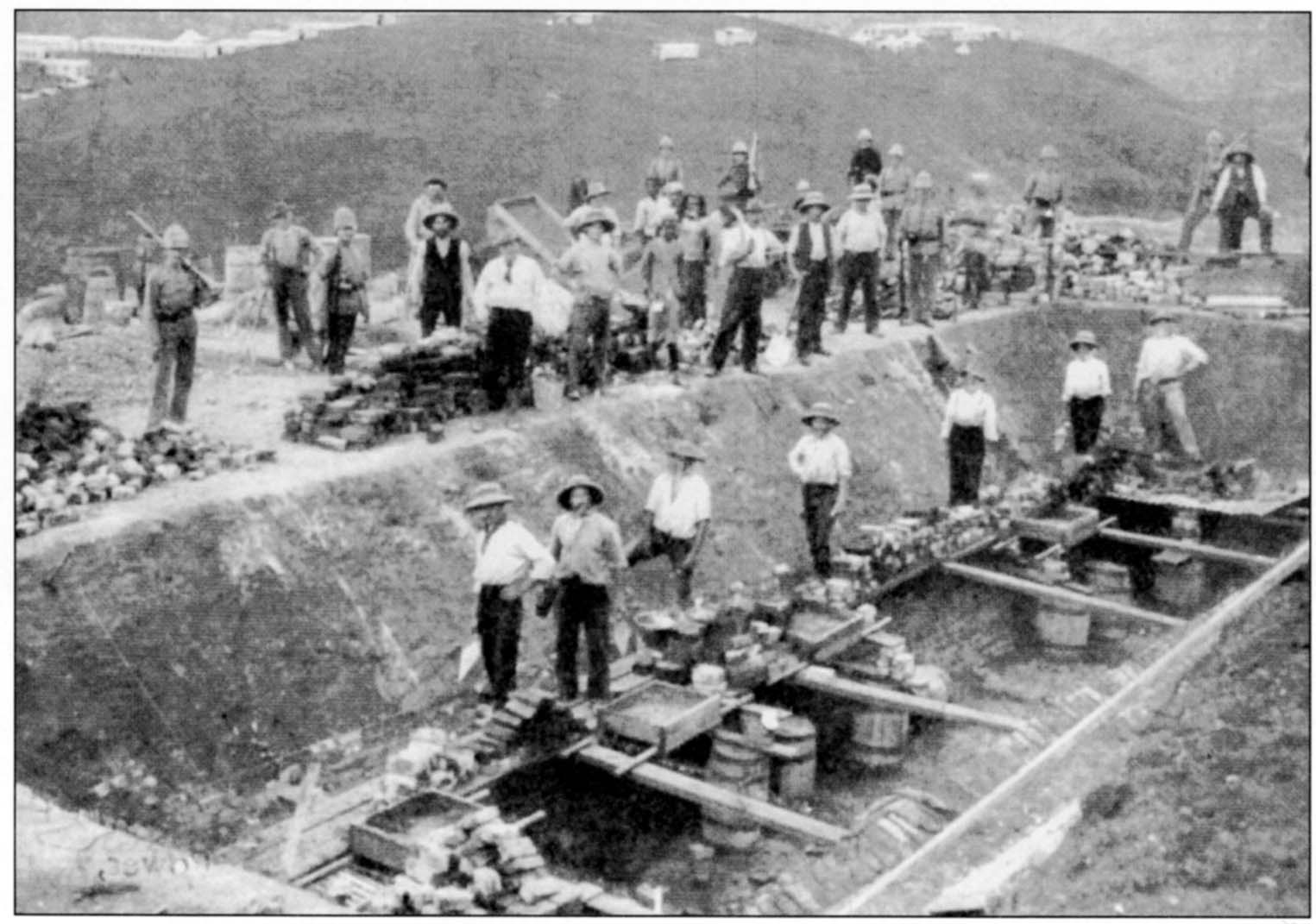
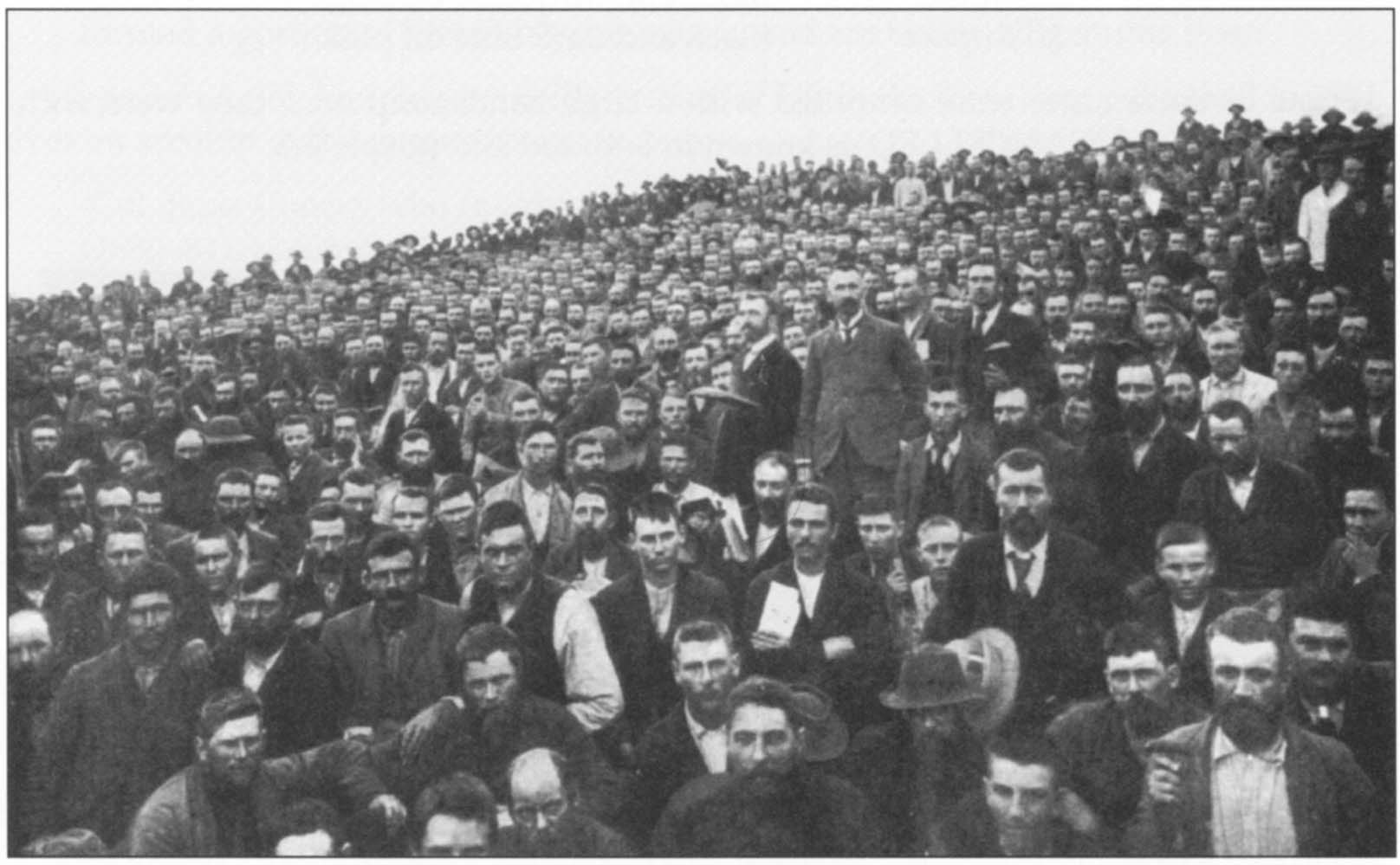
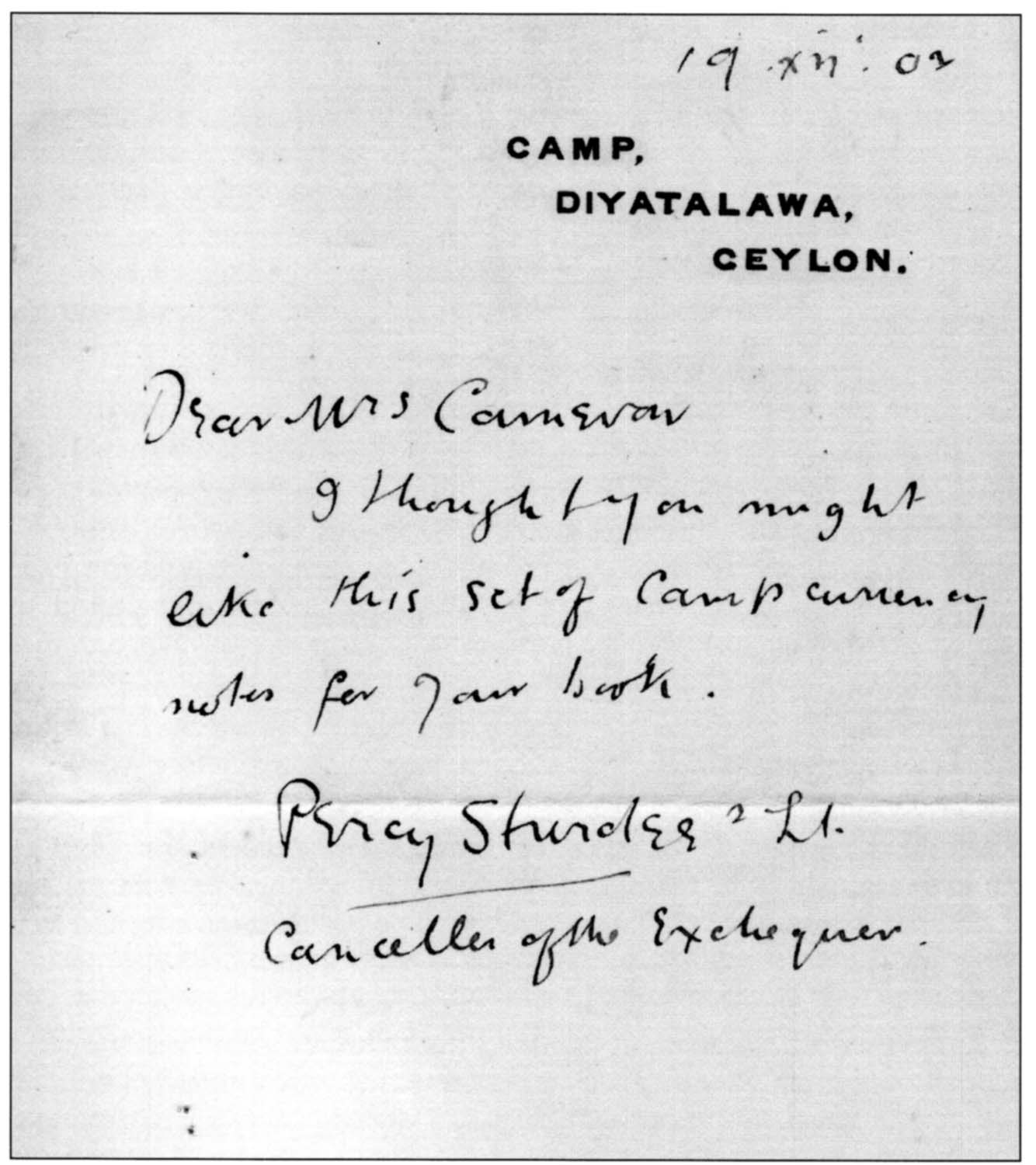
|
Excerpt pages 71-75 taken from Paper Currency of the Anglo-Boer War 1899-1902 by John Ineson, published in 1999, reproduced by kind permission of Spink and Son Ltd. Text and images were scanned, OCRed and edited. | 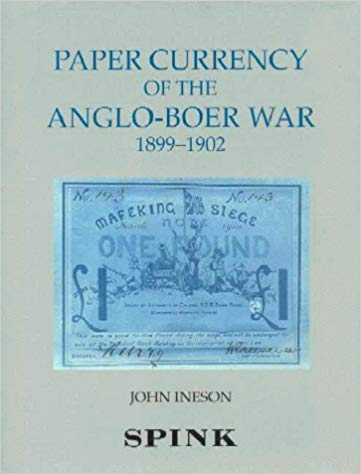
|